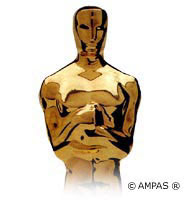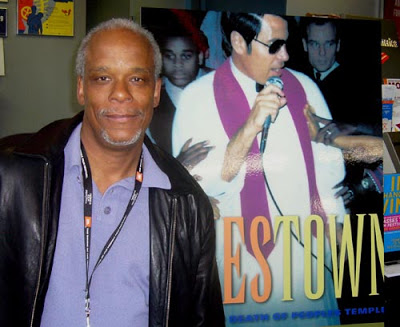
The deadline is over. Best Documentary nominations, and the rest, were all due in yesterday, 5 p.m. It’s time now for a lot of genuine faith, which fits right in with the subject matter, after all.
Just please say it ain’t so, voting members of the Academy. This obscene con job of a film that slithered onto the short-list—“Jonestown: Life and Death of the People’s Temple”—you couldn’t have put this thing into the final five.
image source
The “New Religious Movement” hordes naturally have other designs. They must be chanting now, humming, clanging tambourines, and rattling e-meters over the thought of Director Stanley Nelson’s cult apologist film capturing an Academy Award.
We now wait while they count, until January 23. That’s when the official five nominations are announced. Then we’ll have one more sign if the moral depravity meter has risen another notch.
So please focus, all ye readers of sound mind…. Pray that enough Academy members were not lured in like throngs of cult captives or mindless film critics. Grant that the voters fled far and away from this fetid Potemkin Village that Stanley built.
A handful of the critics did, in fact, manage to send a couple of warning flares about “Jonestown.” The media “too-little, too-late” People’s Temple rerun features Newsweek headliner David Ansen, whose ground-shaking revelation was that his favorite films of 2006 “blurred the lines between reality and fiction.”
Bravo, Sir David. No, he didn’t quite come out and say Nelson served up the public a “faux-documentary.” He didn’t need to. Director Stan did it for him. In a recent New York Times interview, Nelson glowed, “What’s fascinating about documentary today is the different ways to approach it.”
He went to qualify exactly what he means: Historical accuracy, in a Nelson-mutated documentary, will be relegated in place of “advocacy.” You see, big change is coming your way. Objectivity…is on the official endangered list.

Image Source
“Just by being somewhat objective,” said Nelson, “We were being revolutionary.”
“Somewhat objective”?
Yes, that means if you have any understanding about the principles of cult dynamics, or know the background of the unembellished, uncensored history of Jim Jones and the full horror he unleashed, Lord Nelson’s expert sanitizing will disabuse all that. True enough, he IS required to mention some of the requisite “negatives.” But the most destructive cult in American history? Oh, my heavens, no—far be it from that, according to our budding social scientist.
“What I learned from doing this film,” Nelson told Stylus Magazine in an interview last October, “was that one of the most dangerous things is when you join these communities and they deliver on their promise. I think People's Temple delivered on what it promised people. It promised them that they would be part of a big family and live a new way. And it delivered. That’s why they stayed.”
Well, how about that. Yes, “delivered.” It would be interesting hearing reputable cult experts in the field—the late Margaret Sanger, Robert Lifton, Philip Zimbardo, or any others—comment on Professor Stan’s assessment. Closer to the case is Dr. Keith Harrary’s analysis is of this “big family’s new way.”
Dr. Harrary had worked as counseling director at Al and Jeannie Mills’s Human Freedom Center in Berkeley, California, where they offered help to suffering People’s Temple defectors, as well as those from other cults ranging from the Moonies to Hare Krishnas.
[Al and Jeannie Mills (along with their daughter, in 1980, murdered by unknown assailants) had been top defectors themselves, but have been censored in the film—one of scores of the missing pieces in Nelson’s “somewhat objective” history.]
What does Dr. Harrary say about how “motivation” was instilled in someone, so they could continue enduring unspeakable brutality—in California, long before “Dad” shipped them off to his Guyana Gulag?
“Jones had forced them to prove their loyalty by signing blank pieces of paper,” wrote Dr. Harrary in a March, 1992, Psychology Today article, “blank power-of-attorney forms, and false confessions that they had molested their children, conspired to overthrow the U.S. government, and committed other crimes while members of the cult. It was the sort of thing Jones did to control people, like the time he tricked a member into putting her fingerprints on a gun and told her he would have someone killed with it and frame her for the murder if she ever left the group.”
And what about Nelson’s claims of this wondrous “new way,” which he insists was fulfilled in “the beginning,” and masquerades on screen? Again, in the Redwood Valley years well before Jonestown came about, the “new way” was something altogether different.
“There was a deliberate malevolence about the way Jones treated the members of his cult that went beyond mere perversion,” stated Dr. Harrary, “It was all about forcing members to experience themselves as vulgar and despicable people who could never return to a normal life outside of the group. It was about destroying any personal relationships that might come ahead of the relationship each individual member had with him."
“It was about terrorizing children and turning them against their parents. It was about seeing Jim Jones as an omnipotent figure who could snuff out members’ lives on a whim as easily as he had already snuffed out their self respect."
“In short, it was about mind control.”
Mind control. Find any cult apologist on your block, say this phrase three times fast, and they might just slowly spasm up the nearest wall like a crazed spiderman. Pepper them liberally with “cult”--a four-letter profanity spice to which they are allergic--and you got a real spectacle. But be prepared, audience: If you have the odd notion that Nelson’s “documentary” about one of history’s most notorious cults has ANY INFORMATION WHATSOEVER about cults or mind control, forget it.
The script says it was a “church,” okay? A “revolutionary” church, kind of like Stan’s “objectivity.” Written by Marcia Smith (Mrs. Nelson) and Noland Walker (who had family members in the cult and attended services), they provide Nelson some extra left-wing sizzle—as if he needs more—by incorporating a second official academic cult apologist in film. The first comes from Rebecca Moore, who teaches religious studies at San Diego State University. The second sound bite comes from John Hall, who dishes out his cult apologetics at UC Davis. The following, an excerpt entitled “The Collectivist Reformation,” from Hall’s book, “Apocalypse Observed: Religious Movements and Violence in North America,” might be the best explanation for Stanley and Mrs. Nelson’s bizarre vision:
“Where People’s Temple deviated much more dramatically from conventional social practice,” writes Hall, “was its members’ high rates of tithing, unsalaried labor, and donation of real and personal assets. In turn, these differences were part of a more profound difference—replacing individualism and the family unit with the communal equation of an organization that pooled the economic recourses of its most highly committed members, and in return, offered them economic security, an extended collectivist ‘family,’ and the opportunity to participate in a politically meaningful social cause larger than themselves."
“Balancing that equation, the Temple demanded commitment, discipline, and individual submission to collective authority.”
Oh, of course, Professor Marx. Logically stated. A “cause larger than themselves.” Today they have to listen to that hooey in those totalitarian hell-holes called Cuba and North Korea. Which is precisely what Jim Jones was for the captives of the Peoples Temple—a modern-day Stalin, whose mandated foreign language lesson of the day in Jonestown was, yes, Russian.
But, once again—Stanley, Mrs. Nelson, and their little comrade, Noland—somehow “forgot” to inform their audience of this little bit of trivia. And a shameful bit more.
Cult apologist, revisionist history with a vengeance. This, a short-listed nomination for Best Documentary of the Year??
Somebody ought to call Hollywood 911.




